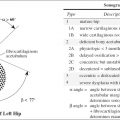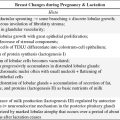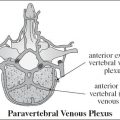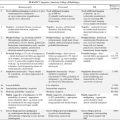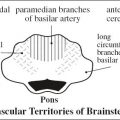SEDATION
= administration of medication to calm the nervous system: ⇓ awareness; ⇓ responsiveness to external stimuli; ⇓ anxiety; ⇓ spontaneous movements; may produce amnesia
Phases of sedation protocol: 1. Preprocedural assessment
2. Intraprocedural monitoring
3. Postprocedural monitoring
Presedation Assessment
1. Evaluate patient (within 30 days of procedure + update within 24 hours)
(a) personal history:
› cardiovascular: hypertension, myocardial infarction within prior 6 months, CHF, arrhythmia → pose an increased risk
› respiratory: asthma, COPD, other lung disease
› gastrointestinal: GERD, peptic ulcer, nil per os (NPO) status
› fasting status: predictor of aspiration
◊ In an emergent procedure administer 10 mg IV metoclopramide (Reglan®) + 10 mg IV famotidine (Pepcid®) / other H2 blocker!
(b) medication history
› continue cardiovascular medication
› monitor blood sugar in diabetics
(c) physical examination
2. Classify physical status of patient (see table)

3. Document discussion with patient concerning risks and benefits + obtain consent
4. Document plan for sedation
Dose adjustment:
› in elderly 30–50% dose reduction + more frequent dose intervals
› decrease dose with impaired kidney / liver function
› habitual users of opioids / benzodiazepines require higher doses
Convert to monitored anesthesia (= supervision by anesthesiologist) if:
(a) sedation cannot be administered safely (eg, Pickwickian syndrome, sleep apnea)
(b) deep sedation is required
5. Assure presence of appropriate personnel + equipment
6. Identify correct patient immediately before onset of procedure
Intraprocedural Monitoring
1. Respiratory rate: continuous monitoring with pulse oximetry
2. ECG: continuous monitoring
3. Blood pressure: every 5 min + before every dose
4. Assessment of Alertness
5. Pain assessment: verbal descriptor, linear numeric, face-pain scale

Postprocedural Monitoring
= monitoring for postprocedural complications as drugs are unopposed by anxiety and pain related to procedure → deepening of sedation + respiratory depression
Frequency: in 15-minute intervals for ≥ 30 minutes after last dose; for ≥ 2 hours after use of reversal agent
Sedatives
A. Benzodiazepines
Action: facilitate actions of g-aminobutyric acid (= main inhibitory neurotransmitter) in CNS; synergistic with opioids
Properties: anxiolytic, amnestic
1. Midazolam (Versed®)
Administration: IM, IV (rapid onset of action)
Elimination half-life: 1–4 hours (short)
2. Lorazepam (Ativan®)
Administration: PO, IM, IV (variable peak effect)
Elimination half-life: mean of 15 hours
3. Diazepam (Valium®): also anticonvulsant
Elimination half-life: 20–100 hours
Administration: PO, IM, IV (painful)
B. Diphenhydramine (Benadryl®)
Action: blocks histamine-1 receptors (H1 blocker); anticholinergic
Contraindication: asthma, narrow-angle glaucoma, urinary retention
Side effect: dry mouth, dizziness, sedation
Reversal Agents
= drugs counteracting effects of drugs used for anesthesia
Assessment: patient difficult to arouse, cardiorespiratory depression (= oxygen desaturation, drop in blood pressure)
Stay updated, free articles. Join our Telegram channel

Full access? Get Clinical Tree



